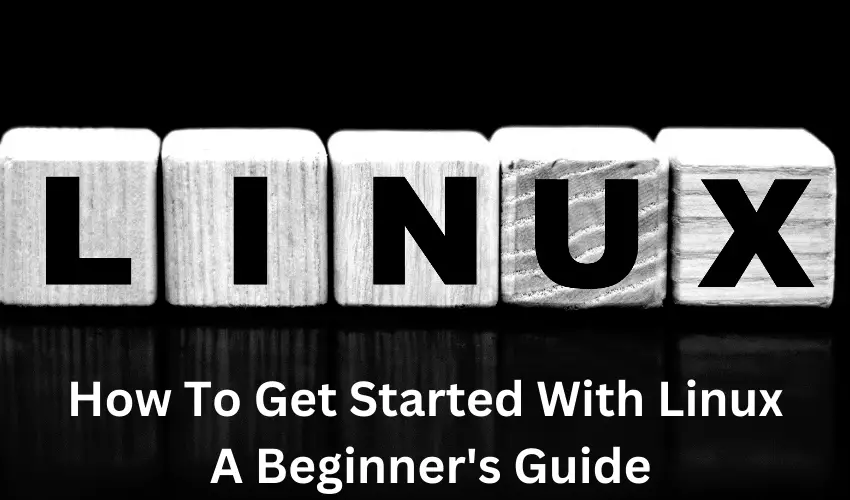You can purchase and use the open-source, free operating system known as Linux. We'll go over most of what you need to know to get started with Linux in this beginners' guide, including where else to acquire it, how to download it on your desktop, which distribution is best for you, and more.
Even how to gain Linux driver functionality will be taught to you!
Also Read: Linux commands you should never run on your system
Which Distribution Fits me Best?
Choosing which distribution to use is the first step in beginning with Linux. Various versions exist, including Firefox and Unity.
Each of these installations has a distinct community and specialises on a particular use case or market segment within the Kernel maintainers:
The systemd-based init systems supported by Fedora (www.fedoraproject.org) are renowned for being stable and dependable options that make it simple to monitor processes and systems on your machine without wanting to cope with PIDs or other technical aspects involved in handling them manually.
Users who are unfamiliar with Operating systems like apt windows interface command line development tools such as Chrome browser plugin modifications will still be capable of carrying out implementation tasks without will need any prior knowledge of command line commands thanks to Ubuntu's (www.ubuntu.com) simple-to-install packet owner called Synaptic Shipment Manager!
Linux Setup Instructions
There are four primary methods for installing Linux:
The operating system can be downloaded to a USB device, which you can then boot from. There are various ways to accomplish this, and even using NTFS segments on your hard drive or making one using Mac OS X's Recovery Software.
Website Source
An image file known as an ISO file can be downloaded from a website like https://www.linuxiso.org/download/. Whenever you have a moment,Since you don't need to turn off applications that can prevent Linux installation or wait for your browser's BIOS defaults to update after installing the new, this is likely the easiest approach to get underway (like iCloud). If you don't have much time.
Stick to Technique #3
If you don't have much time, stick to technique #3 below.
A physical tape or CD that includes all the files necessary for installing onto someone's computer's hard disk as well as the additional software required in conjunction with them (and occasionally even video instructions!) is also an option.
When purchasing brand-new laptops, these are typically pre-installed; however, if purchasing a used computer through services like eBay and Craigslist, this may not always be the case. Because vendors may add more things in place of merely CDs, DVDs, etc., such as cell phones.
Obtaining Linux Driver Support
In Linux, there are several ways to obtain driver support. The manufacturer's following drivers can be installed in addition to the built-in drivers. It's also possible that your virtual machine is incompatible with some hardware unless you're using a brand new computer without driver support.
In this situation, utilising virtual machines like VirtualBox or Playstation Player to run Window frames on top of existing Linux systems can be a good idea (or vice versa).
Install some helpful software in its place if your gadget doesn't yet have any strong approval but is still functional (trust me when I mention that this happens frequently).
Looking around the Computer and Software Store
You've actually realized that Windows and OS have different desktops than Linux. You're not alone; unless you use the command line, you probably won't even notice how much less daunting it is because Linux users are more accustomed to it than users of other operating systems.
- Open a new window will appear to begin using Linux.This will launch the "bash" application (more commonly known as "bash shell"). Your screen should contain the following prompt at the top:
- In the absence of one, enter "user@hostname:$." If for any reason this doesn't work (for instance, if another user has barricaded out your password), please type just "user@" preceded by the location or IP address of your computer, laptop, tablet, phone, etc., followed by the symbol $.
- Depending on the model of Virtualbox or Debian you currently installed on your device, the prompt may differ somewhat, but it generally looks like this.
Is Linux Support Online Anonymity?
It is frequently asked question that Whether Linux supports online anonymity (support virtual private network) or not.
Answer is very simple: yes Linux supports online anonymity. It supports quality VPNs and some types of VPN encryption that ensure user safety and encrypt their users PC's data. Don't try to alter the system setting until you know it.
Therefore, carefully change the settings of the computer with the Linux system because if some command goes missing you have to face a tough time. Don't be a developer by yourself.
Conclusion
It's time to get going now that visitors understand how to install and use Linux. Both inexperienced and seasoned computer users should consider Linux.
It has been active for more than 20 years, provides a huge selection of programs and services, and supports hundreds of distinct languages! With this fully accessible linux kernel, there is something for everyone, whether you choose to run Ubuntu on a laptop or set up virtualization on your personal computer, even just browse the web with Firefox.
We are giving you exclusive deals to try Linux Servers for free with 100$ credit, check these links to claim your 100$,
DigitalOcean - 100$ free credit & Linode - 100$ free credit
Check some Exclusive Deals, HERE.
Also, check out DevOps Book You should read section.
